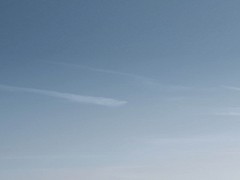|
1回顶部 如果你在开发图形或多媒体应用程序,你可能正在为如何不使用窗体的标题栏而移动窗体发愁。其实只需用鼠标拖动窗体的客户区就可以了。 方法一 2回顶部 以上方法不完善之处 当把“拖动窗口的过程中显示其内容”的选项取消时,让我们看看会发生什么。这是Windows窗口的一项设置,你可以在“开始菜单-->设置-->文件夹选项-->查看-->高级设置”中找到该属性。在Windows95中,你需要修改注册表。当此属性被设为无效,拖动窗体时窗体会变为一个正方形轮廓线。也许你使用一个不规则窗体,但它仍然会显示轮廓线。 当你想要让你的窗体停靠在屏幕的边缘(如:WinAmp,当你拖动窗体进入屏幕顶部某一特定位置时,窗体便紧靠在屏幕顶部),如果你使用以上第二种方法,在鼠标按钮放开前,你将无法处理窗体位置,并无法处理停靠问题。 下面我会用简单的方法解决两个问题: 第一,无论设置为何,在拖动窗体时都不显示轮廓线; 第二,移动窗体时进行位置检测,并在位置适当时停靠在某一特定位置。很多人也许已经解决了这些问题,但是也许下面的代码对你会有帮助。 方法三 以下代码可以直接复制到Delphi中,前提是你将Form1存为uMain.pas,Form2存为uDock.pas。用到的事件是:onMouseDown,onMouseMove,onMouseUp,OnShow(Form1)。 这是一个根据鼠标的移动移动窗体的方法,包含两个窗体,uMain和uDock(Form1和Form2)。Form2通过Form1打开,并可以停靠在Form1的底部。停靠后,Form2将随Form1一起移动,直到你将Form2移开。 3回顶部 Form1 unit uMain; interface uses Windows, Messages, SysUtils, Classes, Graphics, Controls, Forms, Dialogs; type TForm1 = class(TForm) procedure FormMouseDown(Sender:TObject; Button:TMouseButton;Shift:TShiftState;X,Y: Integer); procedure FormMouseMove(Sender: TObject; Shift: TShiftState;X,Y: Integer); procedure FormMouseUp(Sender:TObject;Button:TMouseButton;Shift:TShiftState;X,Y: Integer); procedure FormShow(Sender: TObject); private { Private declarations } public DocktoForm: Boolean; { Public declarations } end; var Form1: TForm1; CanMove, CanMoveX, CanMoveY: Boolean; OldX, OldY: Integer; F1X,F1Y,F2X,F2Y: integer; WorkArea : TRect; implementation uses uDock; {$R *.DFM} procedure TForm1.FormMouseDown(Sender: TObject; Button: TMouseButton;Shift: TShiftState; X, Y: Integer); begin CanMoveX := true; CanMoveY := true; CanMove := true; OldX := X; OldY := Y; if DocktoForm then 4回顶部 begin F1X := Form1.Left; F1Y := Form1.Top; F2X := Form2.Left; F2Y := Form2.Top; end; end; procedure TForm1.FormMouseMove(Sender: TObject; Shift: TShiftState; X, Y: Integer); begin if (CanMove) then begin if CanMoveX then Form1.Left := Form1.Left + (X - OldX); if CanMoveY then Form1.Top := Form1.Top + (Y - OldY); //This section latches to the top if (Form1.Top < WorkArea.Top + 10) and (Form1.Top > WorkArea.Top-10) then begin Form1.Top := WorkArea.Top; if (Y-OldY > 10) or (Y-OldY < -10) then CanMoveY := true else CanMoveY := False; end; //This section latches to the left side if (Form1.Left < WorkArea.Left+10) and (Form1.Left > WoskArea.Left-10) then begin Form1.Left := WorkArea.Left; if (X-OldX > 10) or (X-OldX < -10) then CanMoveX := true else CanMoveX := False; end; 5回顶部 //This section latches to the right side if (Form1.Left > WorkArea.Right-Form1.Width-10) and (Form1.Left < WorkArea.Right-Form1.Width+10) then begin Form1.Left := WorkArea.Right-Form1.Width; if (X-OldX > 10) or (X-OldX < -10) then CanMoveX := true else CanMoveX := False; end; //This section latches to the TaskBar if DocktoForm then begin if (Form1.Top > WorkArea.Bottom-Form1.Height-Form2.Height-10) and (Form1.Top < WorkArea.Bottom-Form1.Height-Form2.Height+10) then begin Form1.Top := WorkArea.Bottom-Form1.Height-Form2.Height; if (Y-OldY > 10) or (Y-OldY < -10) then CanMoveY := true else CanMoveY := False; end; end else begin if (Form1.Top > WorkArea.Bottom-Form1.Height-10) and (Form1.Top < WorkArea.Bottom-Form1.Height+10) then begin Form1.Top := WorkArea.Bottom-Form1.Height; if (Y-OldY > 10) or (Y-OldY < -10) then CanMoveY := true else CanMoveY := False; end; end; 6回顶部 if DocktoForm then begin Form2.Left := Form1.Left - (F1X-F2X);// + (X-OldX); Form2.Top := Form1.Top+Form1.Height; exit; end; //This section latches playlist in center of Form1 if (Form2.Left > Form1.Left + ((Form1.Width div 2)-(Form2.Width div 2))-10) and (Form2.Left < Form1.Left + ((Form1.Width div 2)-(Form2.Width div 2))+10) and (Form2.Top > Form1.Top+Form1.Height-10) and (Form2.Top < Form1.Top+Form1.Height+10) then begin Form2.Left := Form1.Left + ((Form1.Width div 2)-(Form2.Width div 2)); DocktoForm := True; F1X := Form1.Left; F1Y := Form1.Top; F2X := Form2.Left; F2Y := Form2.Top; end; end; end; procedure TForm1.FormMouseUp(Sender: TObject; Button: TMouseButton; Shift: TShiftState; X, Y: Integer); begin CanMove := false; end; procedure TForm1.FormShow(Sender: TObject); begin //Get Work Area Parameters SystemParametersInfo(SPI_GETWORKAREA, 0, @WorkArea, 0 ); Form2.Show; end; end. 7回顶部 Form2 unit uDock; interface uses Windows, Messages, SysUtils, Classes, Graphics, Controls, Forms, Dialogs; type TForm2 = class(TForm) procedure FormMouseDown(Sender: TObject; Button: TMouseButton;Shift: TShiftState; X, Y: Integer); procedure FormMouseMove(Sender: TObject; Shift: TShiftState; X,Y: Integer); procedure FormMouseUp(Sender: TObject; Button: TMouseButton;Shift: TShiftState; X, Y: Integer); private { Private declarations } public { Public declarations } end; var Form2: TForm2; CanMove, CanMoveX, CanMoveY, DocktoForm: Boolean; OldX, OldY: Integer; implementation uses uMain; {$R *.DFM} procedure TForm2.FormMouseDown(Sender: TObject; Button: TMouseButton;Shift: TShiftState; X, Y: Integer); begin CanMoveX := true; CanMoveY := true; CanMove := true; OldX := X; OldY := Y; end; procedure TForm2.FormMouseMove(Sender: TObject; Shift: TShiftState; X, Y: Integer); begin if (CanMove) then begin if CanMoveX then Form2.Left := Form2.Left + (X - OldX); if CanMoveY then Form2.Top := Form2.Top + (Y - OldY); //This section latches to the top if (Form2.Top < WorkArea.Top + 10) and (Form2.Top > WorkArea.Top-10) then 8回顶部 begin Form2.Top := WorkArea.Top; if (Y-OldY > 10) or (Y-OldY < -10) then CanMoveY := true else CanMoveY := False; end; //This section latches to the left side if (Form2.Left < WorkArea.Left+10) and (Form2.Left > WorkArea.Left-10) then begin Form2.Left := WorkArea.Left; if (X-OldX > 10) or (X-OldX < -10) then CanMoveX := true else CanMoveX := False; end; //This section latches to the right side if (Form2.Left > WorkArea.Right-Form2.Width-10) and (Form2.Left < WorkArea.Right-Form2.Width+10) then begin Form2.Left := WorkArea.Right-Form2.Width; if (X-OldX > 10) or (X-OldX < -10) then CanMoveX := true else CanMoveX := False; end; //This section latches to the TaskBar if (Form2.Top > WorkArea.Bottom-Form2.Height-10) and (Form2.Top < WorkArea.Bottom-Form2.Height+10) then begin Form2.Top := WorkArea.Bottom-Form2.Height; if (Y-OldY > 10) or (Y-OldY < -10) then CanMoveY := true else CanMoveY := False; exit; end; 9回顶部 //This section latches to the Player Bottom if (Form2.Top > Form1.Top+Form1.Height-10) and (Form2.Top < Form1.Top+Form1.Height+10) and (Form2.Left > Form1.Left-Form2.Width) and (Form2.Left < Form1.Left + Form1.Width) then begin Form2.Top := Form1.Top+Form1.Height; if (Y-OldY > 10) or (Y-OldY < -10) then begin CanMoveY := true; Form1.DockToForm := False; end else begin CanMoveY := False; Form1.DockToForm := True; end; end; //This section latches playlist in center of Form1 if (Form2.Left > Form1.Left + ((Form1.Width div 2)-(Form2.Width div 2))-10) and (Form2.Left < Form1.Left + ((Form1.Width div 2)-(Form2.Width div 2))+10) and (Form2.Top > Form1.Top+Form1.Height-10) and (Form2.Top < Form1.Top+Form1.Height+10) then begin Form2.Left := Form1.Left + ((Form1.Width div 2)-(Form2.Width div 2)); if (X-OldX > 10) or (X-OldX < -10) or (Y-OldY > 10) or (Y-OldY < -10) then CanMoveX := true else CanMoveX := False; end; end; end; procedure TForm2.FormMouseUp(Sender: TObject; Button: TMouseButton;Shift: TShiftState; X, Y: Integer); begin CanMove := false; end; end. 我希望以上内容对那些正面临类似内容困扰的人有所帮助。 |
正在阅读:Delphi中的窗体移动Delphi中的窗体移动
2004-03-31 10:17
出处:delphi精髓网
责任编辑:sdq














